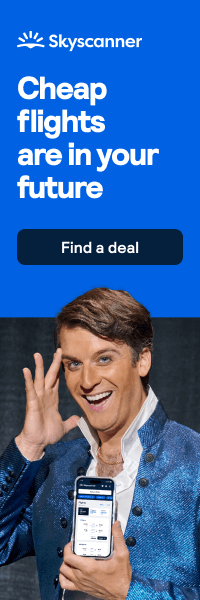The digital storefront is a powerful wealth-creation machine. Building an e-commerce brand offers a viable path to significant personal fortune. This isn't a trend; it's a fundamental economic shift driven by widespread internet access and convenience.
Global e-commerce sales could reach approximately $6.3 trillion by 2027, showing continuous growth. Investors actively fund digital-first consumer brands, recognizing their immense potential.
A surging desire for entrepreneurial independence fuels this movement. A FreshBooks survey found that a rising number of traditionally employed Americans are now contemplating self-employment post-pandemic. Forty percent of respondents say they will likely be self-employed in the next two years. These numbers are higher among younger, under-35 demographics and the highly educated—these groups count would-be entrepreneurs at over 50 percent of respondents.
E-commerce provides an accessible entry point. Significant financial figures back the opportunity. While global startup funding in Q2 2023 reflected a cautious market, recent data from specific regions highlights continued e-commerce investment. For instance, in Saudi Arabia, e-commerce ranked as the top sector for venture capital deployment in the first half of 2025, attracting $306 million, making up about 36 percent of the country's total VC capital. Furthermore, in Emerging Venture Markets during H1 2024, E-commerce/Retail collectively accounted for 17 percent of total funding, driven by significant mega deals.
This guide provides your financial blueprint to build a seven-figure brand from scratch.
Charting Your Course: Initial Capital & Funding
Every successful e-commerce empire rests on a solid financial bedrock. Undercapitalization is a primary reason ventures fail. Your first strategic move is to map out every dollar needed to launch and sustain your business.
Calculating Startup Capital
A precise budget is crucial. Key cost centers include:
- Inventory: Often the most significant outlay, ranging from $2,000 to $10,000+. This is significantly reduced with dropshipping.
- E-commerce Platform Fees: Factor in recurring costs from e-commerce platforms. You can get basic plans and upgrade as you scale.
- Marketing Launch Budget: Essential for initial traffic and sales, typically $500 to $5,000+. E-commerce companies generally allocate 10-20 percent of revenue to marketing.
- Legal & Business Registration: $100 to $1,000 for legal formation and permits.
- Professional Branding & Website Design: $500 to $5,000+ for a high-converting brand identity.
- Contingency: Always 10 to 20 percent of the total estimated costs for unexpected expenses.
Sourcing Seed Funding
Securing capital demands a compelling narrative. Investors favor founders with proven execution and adaptability. Options include:
- Bootstrapping: Using personal savings, retaining 100 percent equity.
- Friends & Family: Crucial early injection; requires formal legal agreements.
- Small Business Loans: Traditional loans often require a robust business plan and good credit.
- Venture Capital (VC): Typically for high-growth potential.
- Crowdfunding: Validates product ideas and builds early customer bases through pre-orders.
Forging Your Fortune: Product Sourcing & Profit Margin Mastery
Your brand's valuation is tied directly to profitability. Product choice and business model are foundational financial decisions.
Dropshipping vs. Private Label (D2C)
Dropshipping offers an extremely low initial investment (under $1,000) and no inventory risk, but it comes with low profit margins (10 to 20 percent net) and minimal brand control. Private Label (D2C) requires a moderate to high investment ($5,000 to $50,000+) and carries inventory risk, yet it offers significantly higher profit margins (25 to 45 percent net) and complete brand control, leading to a much higher asset value. For a seven-figure brand, D2C generally offers superior long-term value and profitability.
Identifying a Lucrative Niche
Product selection is a calculated analysis of market dynamics. Successful founders identify niches with high demand, healthy margins, and beatable competition. This requires diligent research using reliable tools.
The Million-Dollar Megaphone: Scalable Marketing & Growth
A brilliant product and sound financial model are useless if they are unknown. Building a scalable growth machine means a data-driven strategy that maximizes return on every dollar.
Lean, High-ROI Marketing
Focus on cost-effective digital strategies:
- Content Marketing: Builds authority and attracts organic traffic through valuable information.
- Social Media Marketing: Offers direct access to a massive audience, especially Gen Z.
- Targeted PPC: Drives immediate sales on platforms like Google and Meta, requiring meticulous management for profitability.
- AI Integration: E-commerce leaders in 2023 are leveraging AI for enhanced customer satisfaction, personalization, and higher conversion rates.
Dominating Search: E-commerce SEO
Organic search traffic is the ultimate long-term asset, providing free, high-intent customers. Achieving top rankings requires sophisticated e-commerce SEO that goes beyond the basics. While technical and on-page optimizations are fundamental, truly competitive organic growth relies heavily on expert link building strategies for ecommerce.
Firms like Profit Engine, for instance, specialize in developing these robust strategies to enhance organic visibility. A strong SEO foundation, bolstered by authoritative links, captures high-intent customers consistently and reduces reliance on paid channels for acquisition.
Reading the Numbers: Key Performance Indicators
You can't grow what you don't measure. Professional e-commerce businesses obsess over their financial dashboard, tracking KPIs that signal health and trajectory.
The Metrics That Matter Most
A few KPIs are non-negotiable:
- Customer Acquisition Cost (CAC): Total cost to acquire a new customer. CAC varies with region and industry.
- Customer Lifetime Value (LTV): The Total net profit a customer generates. A healthy LTV: CAC ratio is 3:1 or higher.
- Conversion Rate: Percentage of visitors who buy.
- Average Order Value (AOV): Average spent per order. Increasing AOV through upselling boosts the bottom line.
- Gross Profit Margin: Revenue left after Cost of Goods Sold.
From Data to a Sellable Asset: The Exit Strategy
A business with strong, well-documented financials is a valuable, sellable asset. Investors buy predictable profits and proven growth models. A clear financial dashboard is the ultimate key to a multi-million-dollar exit.
Your E-commerce Empire Awaits
The journey to a million-dollar e-commerce brand is rigorous but precise. Success is forged through a disciplined, financially-grounded approach. You create a resilient, scalable enterprise by building on solid financials, a high-margin product, a data-driven marketing engine, and meticulous financial tracking. This blueprint provides the strategic knowledge to navigate challenges and turn ambition into a legitimate, million-dollar e-commerce empire.













